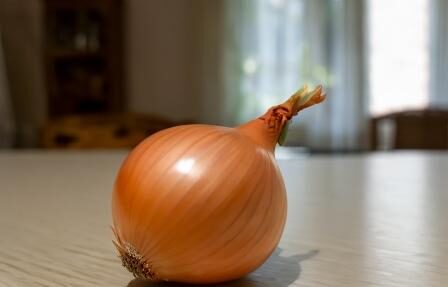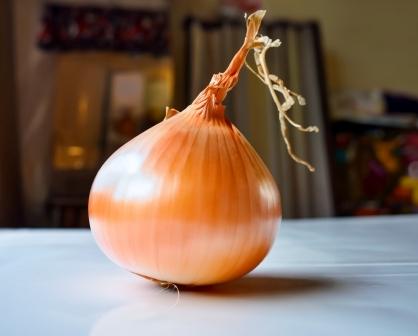Introduction:
In the culinary world, there is a humble ingredient that often goes unnoticed—the onion. Despite its ubiquity in various cuisines, the onion remains an unsung hero of the kitchen, silently enhancing the flavor profiles of countless dishes. From its rich history to its health benefits and versatile uses, this article will delve into the intriguing world of this vegetable, showcasing why they deserve recognition as an indispensable ingredient.

Table of Contents:
- The History and Cultivation of Onions
- The Alluring Flavor and Aroma of Onions
- Onion Production
- Health Benefits of Onions
- Cooking with Onions: Tips and Techniques
- FAQ.
- Conclusion
The History and Cultivation of Onions:
To truly appreciate the significance of this vegetable, it is important to understand their history and cultivation. From ancient civilizations to modern-day cultivation practices, we will explore how onions have evolved over time and their widespread popularity across different cultures. In the United States, has a long history behind it. and this vegetable has been grown for thousands of years. Native Americans are some of the first people to produce this vegetable, who used it in food and medicine. The early European immigrants who introduced onions to the New World included them as a staple in their diet.
Today, from Georgia to Washington, more than 20 states in the union grow this vegetable. A projected $877.8 million in value in 2020 makes them one of the most expensive vegetables grown in the US.
The Alluring Flavor and Aroma of Onions:
The distinct flavor and aroma of this vegetable can instantly elevate the taste of any dish. We will delve into the chemical compounds responsible for the unique characteristics of onions and how they contribute to the overall sensory experience.
The three main categories of this vegetable grown in the United States are spring or green onions, summer fresh market onions, and fall/winter storage onions.
Spring onions are harvested before a large bulb has formed, and they have a milder flavor than other types of it. Summer fresh market onions have a thin, light-colored skin and are often sold with their edible green tops. Fall/winter storage it is harvested when the bulbs are fully mature and have a papery skin. These can be stored for several months and are often used in cooking.
One of the famous types of it grown in the US is the Vidalia onion. Sweet Vidalia onions are grown only in the area surrounding Vidalia, Georgia, where the climate is mild and the soil is special. They are a common addition to many Southern recipes and are frequently offered at a premium cost.
Onion Production:
this vegetable is grown commercially in more than 20 states across the country, and their production is highly dependent on day length. Varieties are typically categorized as long-day, short-day, or intermediate-day onions.
With an average production of 503 cwt per acre, the United States harvested this vegetable on about 134,700 acres in 2020. Most of it used in canning and freezing are sourced from fresh market varieties, while dehydrated products use separate varieties with higher solids content.
The top four onion-producing regions or states, according to the National Onion Association, are Washington, Idaho-Eastern Oregon, California, and Georgia.
this vegetable is relatively expensive to produce compared to other vegetables due to their crop requirements for water, pest management protection, and manual labor in the case of fresh market onions.
Health Benefits of Onions:
this vegetable are a high nutrient vegetable and it has low calories, high fiber, and rich vitamin C. it also has quercetin, folate, and potassium. Beyond their culinary value, this vegetable offer a range of health benefits. From boosting immunity to promoting heart health, we will examine the nutritional composition of onions and their potential positive effects on our well-being.
Cooking with Onions; Tips and Techniques:
It is a versatile element because it used in various meals like soups, stews, salads, and sandwiches. It can eaten raw or be cooked, and they can be caramelized to give food a sweet, rich flavor.
The most common method of preparing this vegetable is to fry in light flame in butter or oil until they are tender and transparent.
In this section, we will explore various ways to incorporate this vegetable into your cooking. From sautéing and caramelizing to using them as a base for soups and stews, we will provide practical tips and techniques to enhance your culinary skills.
FAQ:
How do I prevent tearing up while cutting onions?
To minimize tears when chopping onions, you can try refrigerating them before cutting. Cutting onions near running water or using a fan can also help disperse the onion’s vapors. Additionally, wearing goggles or onion-cutting glasses can create a barrier between your eyes and the onion fumes.
Are there different onion varieties, and how do they differ in taste and usage?
Yes, there are various types, each with its unique taste and culinary applications. Yellow onions are versatile with a balanced flavor profile, while red onions are milder and add color to dishes. Sweet onions, such as Vidalia or Walla Walla onions, have a mild, slightly sweet taste and work well in salads. Shallots, green onions, and pearl onions offer different flavors and uses in recipes.
Can I store chopped onions for later use?
It is not recommended to store chopped onions for an extended period as they may lose flavor and freshness. However, you can store any leftover chopped part in the refrigerator for up to two to three days if you use an airtight container. It’s best to use in order to preserve their flavor and texture, as quickly as feasible.
Do onions lose nutritional value when cooked?
This vegetable undergo some nutrient loss during cooking, especially with prolonged heat exposure. However, they still retain health benefits such as antioxidants, vitamins, and minerals. To minimize nutrient loss, consider cooking onions lightly or using methods like steaming or stir-frying, which help preserve their nutritional value.
Are there any alternatives to onions in recipes?
If it is unavailable or unsuitable for dietary reasons, there are alternative ingredients you can consider. Shallots, leeks, or scallions can be used as substitutes in some recipes. However, it’s important to note that these alternatives may impart slightly different flavors to the dish.
How can I combat onion breath?
It can be challenging to eliminate completely, but there are a few remedies you can try. Chewing fresh parsley, mint leaves, or citrus fruits like lemon or orange can help mask the odor. Additionally, practicing good oral hygiene, including brushing your teeth, using mouthwash, or chewing sugar-free gum, can temporarily freshen your breath.
Are there any known allergies or sensitivities to onions?
Although rare, some individuals may have allergies or sensitivities to it. Symptoms can range from mild to severe, including skin reactions, gastrointestinal discomfort, or respiratory issues. If you suspect an allergy or sensitivity of it, it’s best to consult with a healthcare professional for proper diagnosis and guidance.
Can onions be grown at home?
Yes, it can be grown at home in gardens or containers. They can be cultivated from sets or transplants. It prefer well-drained soil, regular watering, and full sun. Growing it at home can be a rewarding experience, providing you with fresh and flavorful produce.
What are some popular dishes that feature onions?
This vegetable are essential ingredients in numerous dishes around the world. French onion soup, Indian biryani, Mexican salsa, Italian pasta sauces, and American onion rings are a few examples of dishes where onions play a significant role. These dishes highlight the versatility and flavor-enhancing qualities of onions.
Are there any cultural or historical references to onions in art or literature?
This vegetable have been depicted in various cultural and historical contexts. Ancient Egyptian art showcases onions, which were highly valued and even buried with pharaohs. It has also been referenced in literature, including works by famous authors. Their symbolism and significance may differ across different cultures and time periods.
Conclusion:
This vegetable, often overlooked in the kitchen, is a true culinary gem. Its rich history, versatile uses, and health benefits make it an unsung hero worthy of recognition. Whether you’re sautéing, grilling, or caramelizing, let the onion take center stage and transform your dishes into flavor sensations. So next time you embark on a culinary adventure, remember to celebrate the humble onion—the unsung hero of the kitchen.




